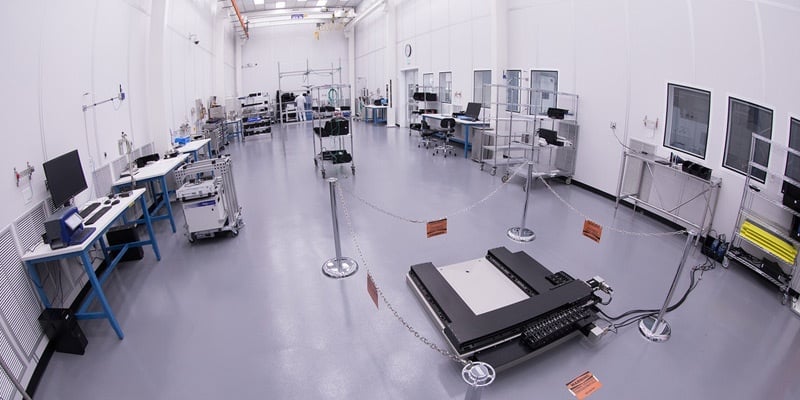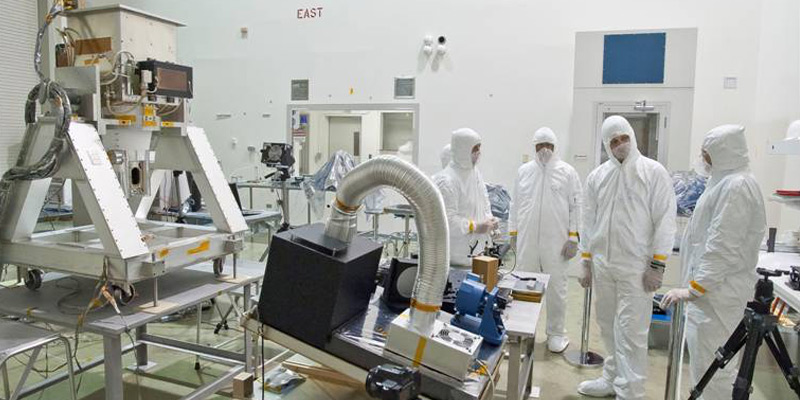Not all cleanrooms are created equally. There are several different classifications for cleanrooms, and each comes with its own standards and regulations. The International Standards Organization (ISO) governs these classifications according to particulate cleanliness. In a nutshell, ISO cleanroom classifications let you know how many particles you’re allowed to have in the cleanroom.
Below is a breakdown of the particle allowances for each of the nine ISO cleanroom classifications. The number of particles allowed for each is per cubic meter:
ISO1
- Up to 10 particles ≥ 0.1 micrometers
ISO2
- Up to 100 particles ≥ 0.1 micrometers
- Up to 24 particles ≥ 0.2 micrometers
- Up to 10 particles ≥ 0.3 micrometers
- Up to 4 particles ≥ 0.5 micrometers
ISO3
- Up to 1,000 particles ≥ 0.1 micrometers
- Up to 237 particles ≥ 0.2 micrometers
- Up to 102 particles ≥ 0.3 micrometers
- Up to 35 particles ≥ 0.5 micrometers
- Up to 8 particles ≥ 1 micrometer
ISO4
- Up to 10,000 particles ≥ 0.1 micrometers
- Up to 2,370 particles ≥ 0.2 micrometers
- Up to 1,020 particles ≥ 0.3 micrometers
- Up to 352 particles ≥ 0.5 micrometers
- Up to 83 particles ≥ 1 micrometers
ISO5
- Up to 100,000 particles ≥ 0.1 micrometers
- Up to 23,700 particles ≥ 0.2 micrometers
- Up to 10,200 particles ≥ 0.3 micrometers
- Up to 3,520 particles ≥ 0.5 micrometers
- Up to 832 particles ≥ 1 micrometer
- Up to 29 particles ≥ 5 micrometers
ISO6
- Up to 1,000,000 particles ≥ 0.1 micrometers
- Up to 237,000 particles ≥ 0.2 micrometers
- Up to 102,000 particles ≥ 0.3 micrometers
- Up to 35,200 particles ≥ 0.5 micrometers
- Up to 8,320 particles ≥ 1 micrometer
- Up to 293 particles ≥ 5 micrometers
ISO7
- Up to 352,000 particles ≥ 0.5 micrometers
- Up to 83,200 particles ≥ 1 micrometer
- Up to 2,930 particles ≥ 5 micrometers
ISO8
- Up to 3,520,000 particles ≥ 0.5 micrometers
- Up to 832,000 particles ≥ 1 micrometer
- Up to 29,300 particles ≥ 5 micrometers
ISO9
- Up to 35,200,000 particles ≥ 0.5 micrometers
- Up to 8,320,000 particles ≥ 1 micrometers
- Up to 293,000 particles ≥ 5 micrometers
What These Classifications Mean to You
You need to know the classification of your cleanroom to know the type and frequency of testing required, the air change rate required to maintain the classification, and the cleaning procedure needed to maintain compliance with regulations.
Testing
- For ISO5 or lower, you need to conduct a particle count test every six months; for ISO6 or higher, it’s every 12 months. All classes need air pressure difference tests and airflow tests every 12 months.
Air Changes
- An important part of a cleanroom is controlling how often the air changes each hour, that is, how often air passes through HEPA filters. The more times the air is changed, the fewer particles there are in the cleanroom. The number of air changes per hour is calculated by dividing the volume of the room by the volume of air filtered in an hour. This is the primary method of keeping a cleanroom within its classification, but there are no set standards for how often the air should be changed, which is why regular particle count tests are necessary.
Cleaning Procedure
- The ISO cleanroom classification determines the cleaning procedure you must have in place to pass inspections and quality checks. Without the proper process in place, you put your entire organization, your bottom line, and your products’ end-users at risk, so make sure you implement the cleanroom cleaning process that’s right for your controlled environment.
ISO cleanroom classifications are extremely specific and nuanced. It’s not enough to know your classification; you also have to understand how to maintain your Cleanroom Cleaning. Our free cleanroom cleaning process guide will help get you started, and it’s a good idea to partner with a third-party organization specializing in controlled environments. Once you’re ready to get started, sign up for your cleanroom cleaning instant quote from Pegasus.








